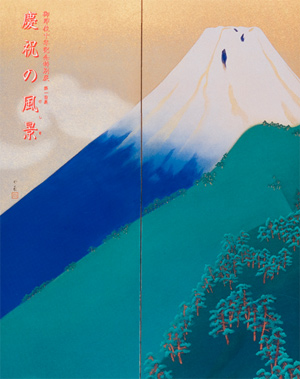| image | information |
|---|---|
 |
As a part of the commemoration project by the Imperial Household Agency for the 10th anniversary of the enthronement of His Majesty the Emperor, the Museum of the Imperia1 Collections (Sannomaru Shozokan) has planned a series of 6 special exhibitions to introduce the relation between the Imperial family and Japanese culture, focusing on art and craft. This exhibition is the first of the series, where we have selected fine works with motifs of Japan's famous places among the paintings and craft works which were created on auspicious occasions of the Imperial family from the Taisho to Heisei periods. In the exhibition we introduce how the tradition of Japanese meisho-e (famous place paintings) was passed down from the yamato-e landscape paintings established in the Heian period to the modem times with new style expressions. Many of them were created as gifts and many of the selected subjects are those of places related to the Imperial family such as Takachiho, Ise and Atsuta, or scenes representative of Japan such as Mt. Fuji. However, they are not necessarily fit within the conventional mejsio-e expression style, and the combination of composition and motifs show originality of each artist seen only in modem art. The same thing can be said about the folding screen painting of Yuki and Suki areas which is used in the Daikyo-no-gi (great ceremony), and the one in this exhibition created on the occasion of the enthronement of the reigning Emperor, was devised in painting methods and selection of detailed depictions by 2 contemporary nihonga painters, while obeying the rules of yamato-e landscape screen painting composition. Also, the fact that places that had not been selected for meisho-e subjects until then became famous places after being depicted by the modern artists, such as those in Hirafuku Hyakusui's Album of famous places in Akita, and the collaborated pictorial scroll of genre scenes, can be considered a characteristic of modern art. However, the most important point to be noted is that, in the modem to present times, these new meisho-e were created mostly on the auspicious occasions of the Imperial family. In this viewpoint, the Imperial family played the role to stimulate artists in the creation of new meisho-e. This exhibition attempts to provide the chance to make this dear through viewing the actual art works. |